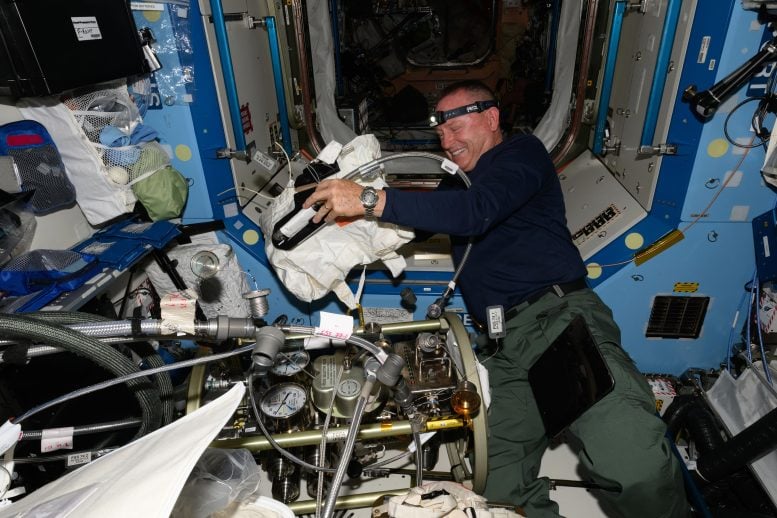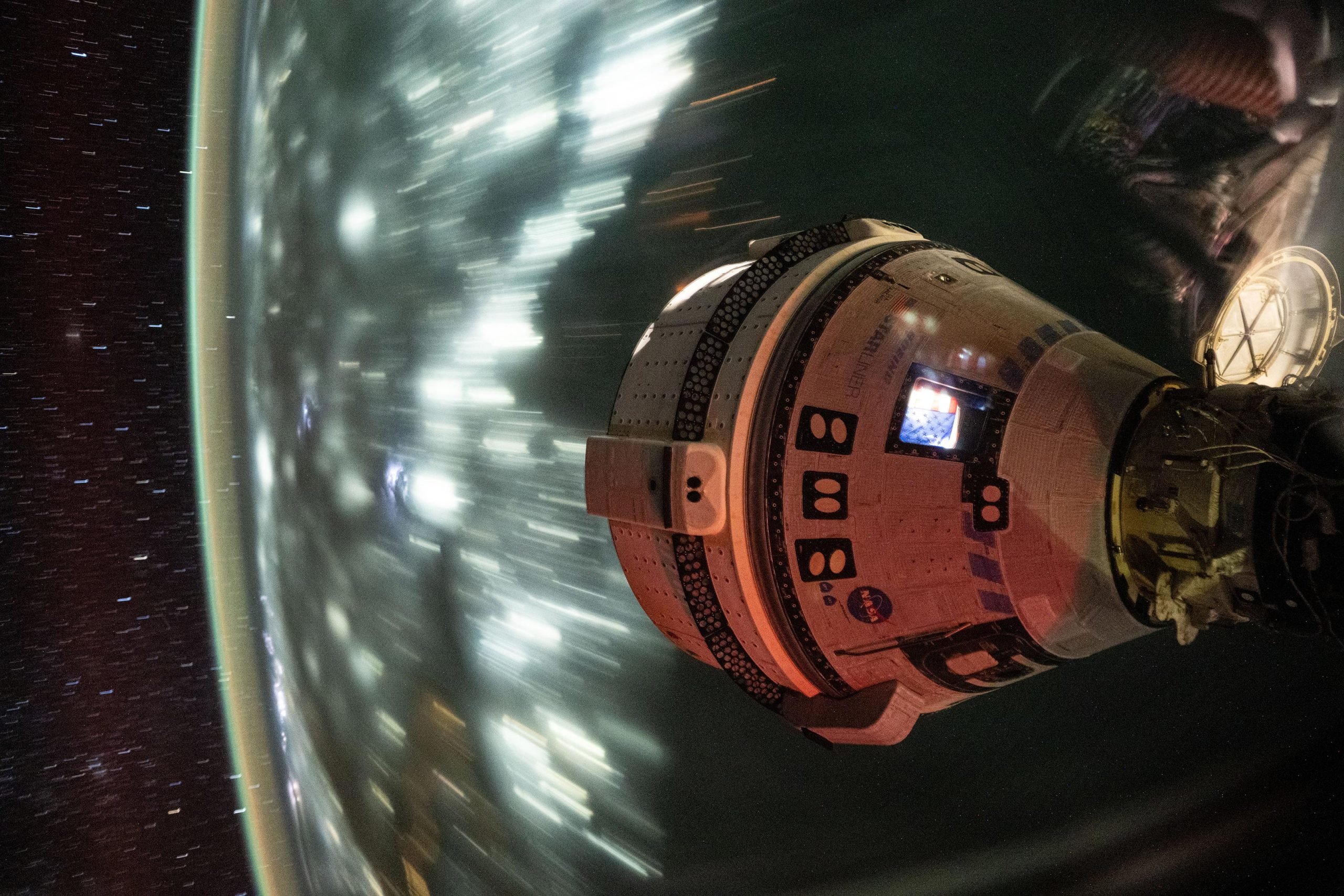Boeing’s Starliner spacecraft that launched NASA’s Crew Flight Test astronauts Butch Wilmore and Suni Williams to the International Space Station is pictured docked to the Harmony module’s forward port. This long-duration photograph was taken at night from the orbital complex as it soared 256 miles above the Arabian Sea off the coast of Mumbai, India. Credit: NASA
Engineers at
“I am extremely proud of the NASA, Boeing team for their hard work in executing a very complex test series,” said Steve Stich, manager, NASA’s Commercial Crew Program. “We collected an incredible amount of data on the thruster that could help us better understand what is going on in flight. Next, our team has moved into engine tear downs and inspections which will provide additional insight as we analyze the results and evaluate next steps.”
Preparing for Starliner’s Earth Return
Integrated ground teams also are preparing for an in-depth Agency Flight Test Readiness Review, which will evaluate data related to the spacecraft’s propulsion system performance before its return to Earth. The date of the agency review has not yet been solidified.
NASA and Boeing leadership plan to discuss the testing and analysis work in detail during a media briefing next week. More information on the briefing will be made available soon.

NASA astronaut and Boeing Crew Flight Test Commander Butch Wilmore works on the Fluid Systems Servicer which drains, purges, and circulates fluids on systems aboard the International Space Station. Credit: NASA
Astronaut Activities and Research on ISS
While testing and analysis are happening on Earth, NASA astronauts Butch Wilmore, Starliner mission commander, and Suni Williams, mission pilot, are working alongside the Expedition 71 crew. The two participated in vein scans using the Ultrasound 2 device on Monday. Doctors on the ground monitored in real-time as the pair took turns imaging each other’s neck, shoulder, and leg veins. Afterward, Wilmore scanned the veins of fellow NASA astronaut Matthew Dominick, helping researchers understand how microgravity affects the human body.
Wilmore and Dominick also spent a portion of the day taking inventory of the food stored aboard the space station. Williams worked on a pair of studies, first exploring the use of microgravity to manufacture higher-quality optical fibers than on Earth. Williams also investigated using fluid physics, such as surface tension, to overcome the lack of gravity when watering and nourishing plants grown in space.











/https://tf-cmsv2-smithsonianmag-media.s3.amazonaws.com/filer_public/34/31/3431771d-41e2-4f97-aed2-c5f1df5295da/gettyimages-1441066266_web.jpg)








Discussion about this post